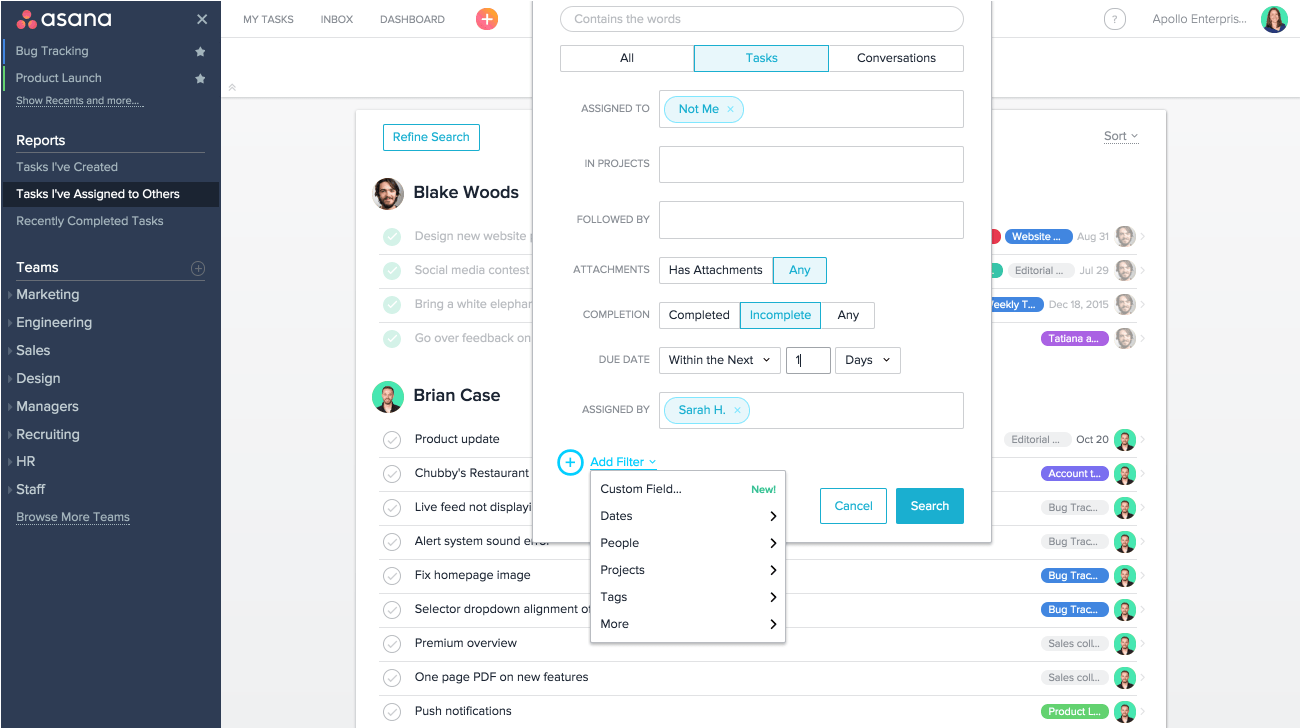Balance transparency and privacy
At Asana, we believe in the importance of transparency, both within our company and our product. Transparency encourages more personal and team accountability, and prevents information silos.
Understanding that the work you do is publicly accessible inherently makes you feel more accountable to your team. When you can see how your work fits in with your team’s objectives, and the company’s goals overall, you’ll feel more empowered—it’s the opposite of micromanagement. This is why Asana projects are public by default, and can be seen by anyone on the team.
Transparency and accountability
To help teams identify who is responsible for what work, each task only has one assignee. By assigning one directly responsible individual (DRI) to each task, teams eliminate miscommunication or missed deadlines simply because someone didn’t know who was responsible or when the work was due.
When teams have clarity on responsibility, everyone is empowered to contribute to a project’s success.
Public vs. private
You can use Asana to track all of your work, but some work might be more sensitive than others. By default, work in Asana is public to your organization, but you can create private projects to keep information limited to only those that need to see it.
To make a private project to you and other teammates, you’ll need to be an Asana Premium user.
Discover work in Asana
By making work public in Asana, teams can see what’s happening now, and look back on work that’s already complete for more information and context. In general, we recommend keeping most work public, so it can be found and accessed by anyone. Work in Asana is easy to find with a simple search.
If you have more specific search criteria, you can use Advanced Search to pull up lists of tasks that match specific criteria like assignee, due date, followers, completion, and more.

With Advanced Search, you can see what other people on your team are working on (and when), and even create reports to ensure work is on track.
Ways to use Advanced Search:
- See all the tasks that a direct report or teammate is working on or what they’ve already completed by searching for an assignee and a due date time frame.
- See what a direct report has prioritized by searching for tasks marked Today, Upcoming, or Later.
- Identify projects and tasks that might miss a deadline (e.g., anything due before the end of the week).
- Determine if you need to follow up with anyone by searching for incomplete tasks that you’ve assigned to others.
- Search for all tasks marked with a “high priority” custom fieldcustom fieldAdd more data to Asana tasks. Field names, types, and values are customizable, so you can create fields specifically for your workflow.Read more to make sure they’re assigned and work will be completed by the due date.
Making work private
Of course, there is certain information that needs to be handled with care. You can create a hidden team or private project for this information. Examples include finance teams dealing with private financial data, legal teams in charge of protecting sensitive information, or managers providing feedback for employee reviews or one-on-one meetings.
To make a project private
- Click the + button at the top of the project
- Select Make Private

Comment-only projects
Whether a project is public or private, you might simply want to ensure that the project can’t be modified once created. You can set the project as comment only, which allows you to give only certain project members editing access. All other members will only be able to comment on tasks and work on the tasks assigned to them. You can change each person’s access settings on a case-by-case basis.
Using Asana to the fullest can mean embracing a level of transparency that some teams aren’t used to, but we believe that to truly achieve results, work should be done in the open. When teams know who is responsible, and collectively agree to the goals and priorities of their team, individuals are empowered to achieve their full potential.
Learn more with How to Asana
Follow along with our How to Asana webseries to learn how to create private tasks, projects, and teams in Asana.
